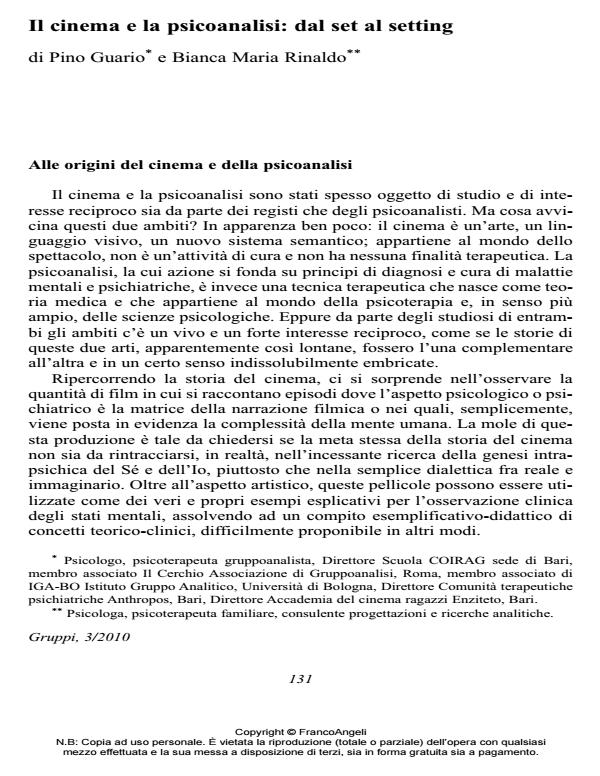The cinema and psychoanalysis: from set to setting
Journal title GRUPPI
Author/s Pino Guario, Bianca Maria Rinaldo
Publishing Year 2011 Issue 2010/3
Language Italian Pages 14 P. 131-144 File size 134 KB
DOI 10.3280/GRU2010-003012
DOI is like a bar code for intellectual property: to have more infomation
click here
Below, you can see the article first page
If you want to buy this article in PDF format, you can do it, following the instructions to buy download credits

FrancoAngeli is member of Publishers International Linking Association, Inc (PILA), a not-for-profit association which run the CrossRef service enabling links to and from online scholarly content.
The cinema and psychoanalysis have often been the subject of study and mutual interest for both directors and psychoanalysts, but what brings them together? The bond between the cinema and psychoanalysis seems to be traceable back to their origins, woven together by seemingly casual events, which are actually the reflection and expression of the collective unconscious matrix of society in the late 19th and early 20th centuries. Looked at the other way round, the context in which these two disciplines originated may also be seen as the dream product of that same society, which, permeated by anguish due to wars and social changes, now appeared ready to reconsider itself, beginning with the confrontation with its hidden demons. If we were to make an extreme simplification, beyond the more complex analyses of the relationship between the language of the cinema and Freudian theory, what really binds these two languages of the soul so closely together is that they both explore the same subject: the unconscious phantoms which animate the individual’s desires and fears in the incessant search for the intra-psychic origin of the Self and the Ego, which allows for a glimpse of the common substrate that is the unitary matrix of the collective unconscious.
Keywords: Dark, dream, set, setting, screening, identification
Pino Guario, Bianca Maria Rinaldo, Il cinema e la psicoanalisi: dal set al setting in "GRUPPI" 3/2010, pp 131-144, DOI: 10.3280/GRU2010-003012